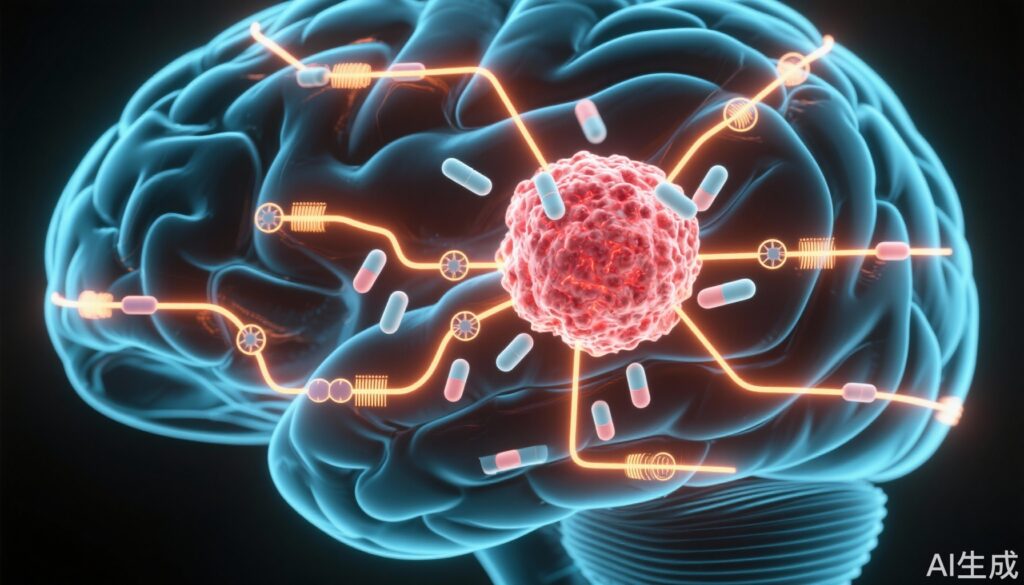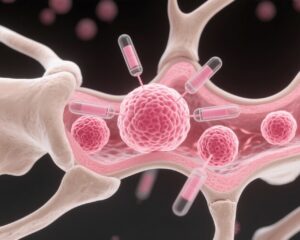Introduction: The Brain’s Energy Demand and the Challenge of Glioblastoma
The human brain, though responsible for only about 2% of body mass, is a voracious consumer of energy—using roughly 20% of the body’s glucose daily to power thinking, memory, and bodily control. This energy primarily comes from glucose, the body’s chief fuel. However, in the presence of glioblastoma (GBM), the most common and aggressive form of brain tumor, this vital glucose is repurposed in sinister ways. Rather than supporting normal brain functions, GBM exploits glucose as “construction material” for its own rapid proliferation and invasion, even warding off chemotherapy and radiotherapy.
On September 3, a landmark study published in the journal Nature revealed for the first time real-time tracking of glucose metabolism in human brain tumors during surgery and in live mouse models. This breakthrough illuminates the covert metabolic warfare underpinning GBM’s aggressive nature and uncovers new avenues for targeted interventions.
Tracking Glucose Metabolism in Real Time: A Metabolic GPS
To understand how glucose fuels both healthy brain tissue and GBM tumors differently, researchers injected a special form of glucose labeled with the stable isotope carbon-13 (13C-glucose) into the bloodstream of patients and live mice. These labeled glucose molecules act like a GPS system: each metabolic step leaves a distinct 13C signature within the byproducts formed.
During surgery, doctors simultaneously resected tumor tissue and adjacent normal cortex. By analyzing these samples with mass spectrometry, scientists quantified where the 13C atoms appeared—allowing them to determine if glucose carbons were being “burned” for energy or “built” into the tumor’s molecular infrastructure.
Normal Brain Glucose Use: Powering Neurons and Conversations
In healthy brain cortex, glucose primarily fuels two critical pathways:
• Energy production via TCA cycle: Glucose enters mitochondria and undergoes the tricarboxylic acid (TCA) cycle, yielding abundant ATP to meet neuronal energy demands.
• Neurotransmitter synthesis: Glucose sustains the production of key neurotransmitters like glutamate and GABA, essential for neuron-to-neuron signaling.
This efficient system supports both the brain’s power needs and its complex communication networks.
Glioblastoma’s Metabolic Rewiring: Downgrading Efficiency to Build Tumors
The study uncovered striking metabolic rewiring within GBM tumors:
• Reduced TCA cycling: The proportion of glucose carbon entering the TCA cycle drastically declines. Instead, tumors scavenge external lactate and amino acids as alternative fuels, abandoning the high-efficiency glucose oxidation pathway.
• Shutdown of inhibitory neurotransmitter (GABA) production: GABA synthesis nearly stops, creating a more “noisy” microenvironment that facilitates tumor invasion.
• Increased nucleotide and NADH synthesis: Glucose carbon spared from energy production is rerouted to synthesize nucleotides (purines and pyrimidines)—the building blocks for DNA and RNA—and NADH, which powers biosynthesis and DNA repair. This shift accelerates tumor replication and enhances resistance to radiation damage.
The Serine “Takeout” Strategy: Outsourcing to Save Glucose
To stretch glucose carbons to their limits, GBM turns to an environmental amino acid called serine. Unlike normal brain tissue that produces serine internally from glucose, glioblastoma cells overexpress serine transporters, effectively “ordering takeout” by importing serine directly from the bloodstream. This strategy frees up glucose carbons to prioritize nucleotide production rather than synthesizing serine themselves.
Dietary Serine/Glycine Restriction: A New Metabolic Therapy
Capitalizing on this vulnerability, researchers formulated a special diet lacking serine and glycine (-SG diet). In mouse models, this diet reduced blood serine levels by 25%, simultaneously diminishing tumor serine and nucleotide concentrations. Aggressive GBM tumors (HF2303 and GBM38) shrank significantly under the diet, with lowered cell proliferation markers (Ki-67 index), and extended overall survival.
Moreover, combining the -SG diet with standard chemoradiotherapy enhanced treatment efficacy against all tested tumors, including GBM12, which was previously therapy-resistant—demonstrating a powerful synergistic effect.
Crucially, normal brain metabolism remained largely unperturbed due to its ability to synthesize serine from glucose, highlighting a therapeutic window that spares healthy tissue.
Clinical Implications: Toward Personalized Metabolic Therapies
This is the first large-scale study to employ stable isotope tracing in human brain surgery, quantitatively exposing GBM’s metabolic Achilles’ heel. Key takeaways include:
1. Glioblastoma’s glucose metabolic reprogramming is quantifiable and targetable.
2. Dietary restriction of serine and glycine offers a low-cost, low-toxicity adjunct to conventional treatments.
3. Pre-surgical short-term isotope tracing may predict patient dependency on environmental serine, allowing stratification of those who would benefit most from metabolic interventions.
Currently, a clinical trial (NCT05078775) is underway to integrate patient-specific metabolic profiling into personalized treatment plans. In the near future, surgeons may perform several hours of preoperative glucose tracing, enabling tailored dietary recommendations to “cut off” glioblastoma’s critical metabolic support.
Case Vignette: Emily’s Journey With Glioblastoma Metabolism
Emily, a 52-year-old teacher diagnosed with glioblastoma, underwent surgical resection. As part of an experimental protocol, she received 13C-glucose before surgery, enabling real-time metabolic mapping of her tumor. The analysis revealed high uptake of extracellular serine.
Her clinical team advised combining standard chemoradiotherapy with a serine/glycine-restricted diet. Over months, MRI scans showed significant tumor shrinkage, and Emily reported fewer neurological symptoms. This personalized approach exemplifies the promise of metabolic therapies informed by precise biochemical fingerprints.
Conclusion
This pioneering study transforms our understanding of glioblastoma metabolism—revealing how the tumor hijacks glucose as molecular building blocks rather than energy and leverages environmental amino acids to sustain its rapid growth and treatment resistance. The findings pave the way for innovative, cost-effective metabolic interventions that selectively starve tumors without harming normal brain tissue.
As the field evolves, incorporating metabolic profiling into routine clinical care could revolutionize glioblastoma treatment, enhancing survival and quality of life for patients confronting this devastating disease.
References
• Zhu Z, et al. Real-time tracing of glucose carbon reveals metabolic reprogramming in human glioblastoma. Nature. 2025 Sep 3; DOI:10.1038/s41586-025-09460-7.
• ClinicalTrials.gov. NCT05078775. Diet and metabolism-based treatment in glioblastoma. https://clinicaltrials.gov/ct2/show/NCT05078775
• Warburg O. On the origin of cancer cells. Science. 1956 Feb 24;123(3191):309-14.
• Vander Heiden MG, Cantley LC, Thompson CB. Understanding the Warburg effect: the metabolic requirements of cell proliferation. Science. 2009 May 22;324(5930):1029-33.
• Locasale JW. Serine, glycine and one-carbon units: cancer metabolism in full circle. Nat Rev Cancer. 2013 Aug;13(8):572-83.



